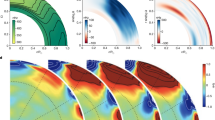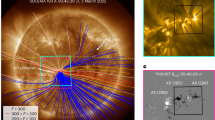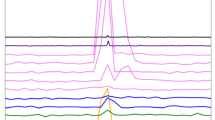Abstract
SOLAR, X-ray emission becomes increasingly localized to active regions as the photon energy increases. Photographs of the Sun at X-ray energies less than 0.5 keV show emission from the entire corona, while those sensitive in the 1–3 keV interval show the X-ray emission to be concentrated in condensed regions1,2 which are correlated with features apparent at both optical and radio wavelengths. If this trend were to continue as expected, X-rays at energies above 3 keV would be emitted exclusively from active regions with little or no contribution from the general corona.
This is a preview of subscription content, access via your institution
Access options
Subscribe to this journal
Receive 51 print issues and online access
$199.00 per year
only $3.90 per issue
Buy this article
- Purchase on Springer Link
- Instant access to full article PDF
Prices may be subject to local taxes which are calculated during checkout
Similar content being viewed by others
References
Underwood, J. H., and Muney, W. S., Solar Phys., 1, 129 (1967).
Pounds, K. A., and Russell, P. C., Space Res., 6, 38 (1966).
Author information
Authors and Affiliations
Rights and permissions
About this article
Cite this article
CATURA, R., ACTON, L. & FISHER, P. Localization of Solar X-ray Emission at Energies above 3 keV. Nature 227, 55–56 (1970). https://doi.org/10.1038/227055a0
Received:
Issue Date:
DOI: https://doi.org/10.1038/227055a0
Comments
By submitting a comment you agree to abide by our Terms and Community Guidelines. If you find something abusive or that does not comply with our terms or guidelines please flag it as inappropriate.



